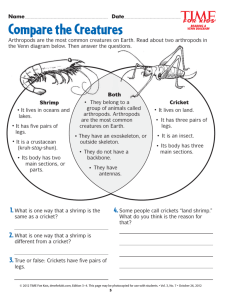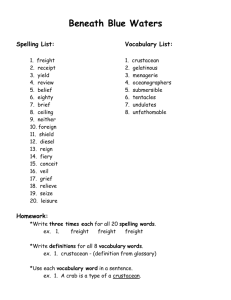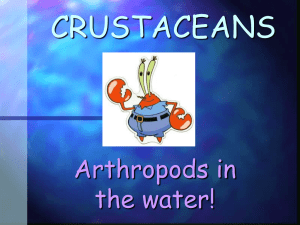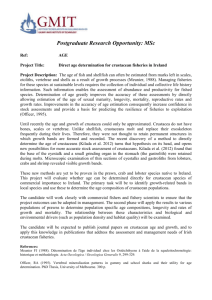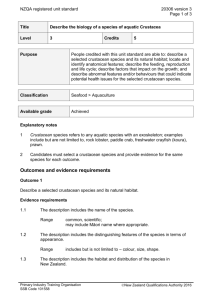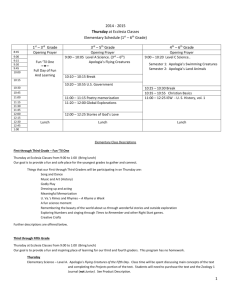1 - Homeschooling is Fun
advertisement
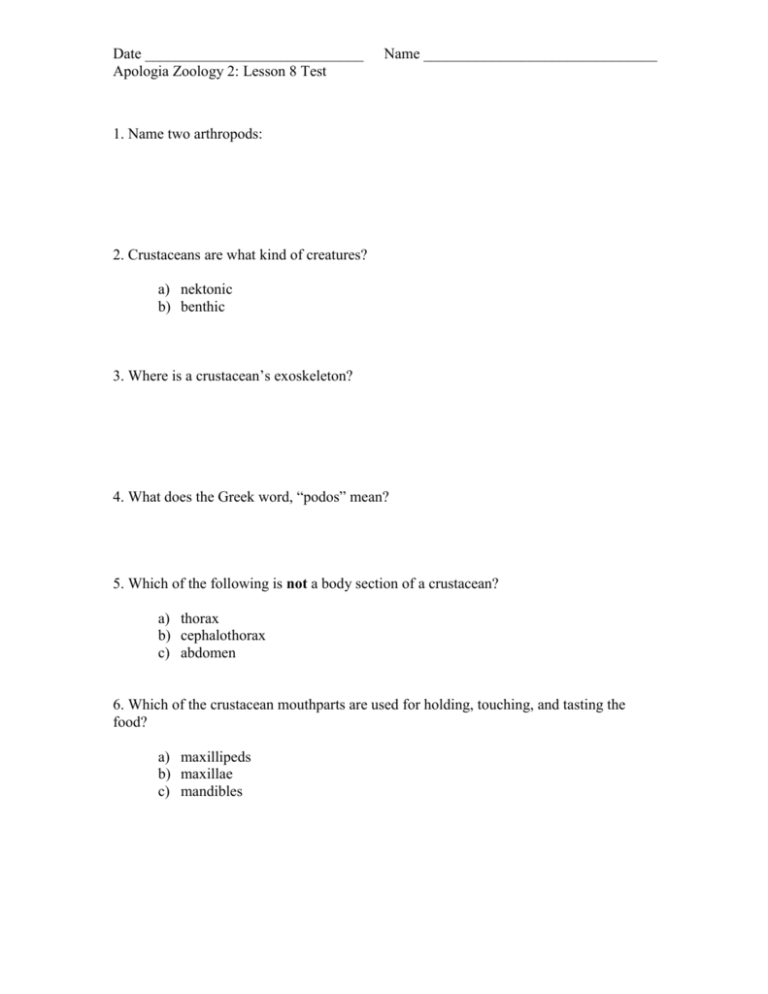
Date _____________________________ Apologia Zoology 2: Lesson 8 Test Name _______________________________ 1. Name two arthropods: 2. Crustaceans are what kind of creatures? a) nektonic b) benthic 3. Where is a crustacean’s exoskeleton? 4. What does the Greek word, “podos” mean? 5. Which of the following is not a body section of a crustacean? a) thorax b) cephalothorax c) abdomen 6. Which of the crustacean mouthparts are used for holding, touching, and tasting the food? a) maxillipeds b) maxillae c) mandibles Date _____________________________ Apologia Zoology 2: Lesson 8 Test Name _______________________________ 7. What does the Greek word “chel” from the word “chelipeds” mean? 8. What crustacean parts act like paddles and help the creatures through water? a) b) c) d) maxillae chelipeds swimmerets carapaces 9. What gender of lobster has a wider abdomen? a) male b) female 10. Name two ways crayfish are different from lobsters. 11. How many types of true crabs are there? a) b) c) d) 1 2 3 4 12. How does a hermit crab get into its shell? a) b) c) d) it makes it squishes its body and slides inside gets in backwards and clings on with its legs crawls in forwards and turns around inside 13. What is it called when two creatures live together in a close relationship? a) b) c) d) diffusion osmosis molting symbiosis Date _____________________________ Apologia Zoology 2: Lesson 8 Test Name _______________________________ 14. What is the name of the island where red crabs cover the streets in millions for a week or two? 15. What kind of shrimp can snap their cheliped with a loud popping sound? a) mantis shrimp b) pistol shrimp c) symbiotic shrimp 16. What kind of crustacean turns the oceans red or pink when they are present in large numbers? 17. How many eyes does the horseshoe crab have? a) b) c) d) 2 4 8 10 18. What extinct crustaceans are there numerous fossils of that have been found all over the world? Date _____________________________ Apologia Zoology 2: Lesson 8 Test Name _______________________________ True or False ________ 19. A crustacean can drop off its chelipeds and not be injured. ________ 20. The fiddler crab has one big and one small cheliped. ________ 21. The exoskeleton is hardened with chitin and sodium bicarbonate. ________ 22. If a keystone species dies, many other animals would die as well. ________ 23. Mutualism is a symbiotic relationship where only one animal benefits. ________ 24. Shrimp can have a mutualism-based relationship with fish because they clean their teeth. ________ 25. Many crustaceans often have three sets of antennae. ________ 26. Lobsters are diurnal.
